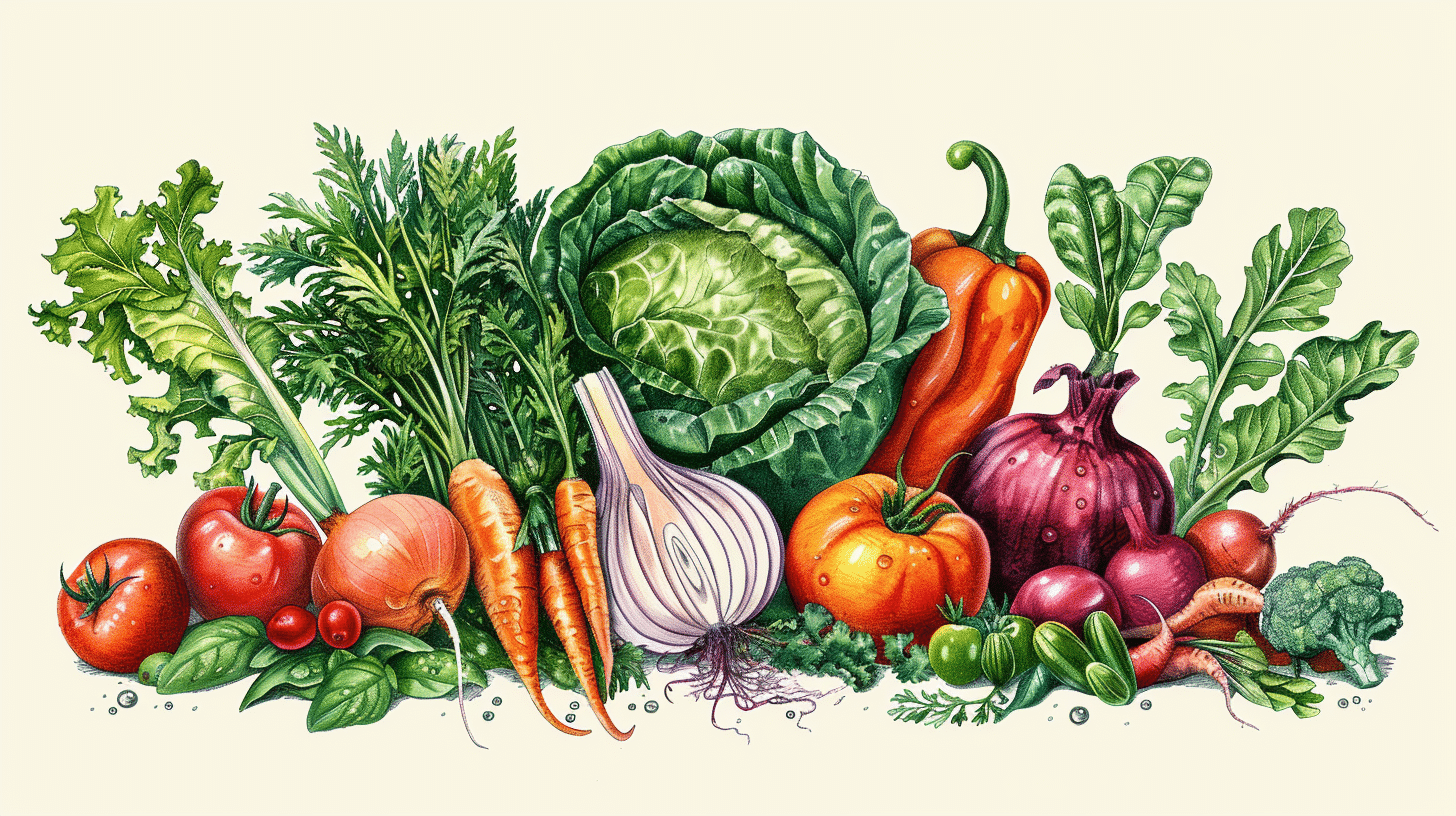15 Colorful Veggies Starting with V
Hey there, veggie lovers! Are you tired of the same old greens on your plate? Wish you could add a pop of color and variety to your meals? We hear you!
Eating a rainbow of veggies is key to a healthy, balanced diet. That’s why I’ve put together the things that start with v.
From familiar favorites to unique treasures, this article will introduce you to a world of delicious and nutritious options.
Get ready to check out verdant velvet beans, vivid violet cauliflower, and more. You’ll learn fun facts, serving ideas, and health benefits that inspire you to embrace these colorful veggies.
So, let’s check in and discover the wonderful world of V vegetables together!
Understanding V-Vegetables

V-vegetables are veggies whose names begin with the letter “V” in English. While some may have different names in other languages, we’ll focus on the English names for this guide, as well as things that start with v.
These vegetables play an important role in a balanced diet, adding variety and unique flavors to meals worldwide.
From the sweet crunch of Vidalia onions to the vibrant hues of violet cauliflower, V-veggies bring both taste and nutrition to the table.
Detailed Characteristics
V-vegetables share common traits, like thriving in specific climates and offering distinct colors and textures. Many, such as Vidalia onions and vine spinach, have a mild, slightly sweet taste.
When it comes to nutrition, these veggies pack a powerful punch. Violet cauliflower contains anthocyanins, antioxidants that give it a beautiful color.
Vidalia onions provide fiber, while vine spinach is rich in iron and vitamins. By incorporating a variety of V-veggies into your diet, you can enjoy a range of flavors and health benefits.
Types of V-Vegetables
1. Velvet Bean
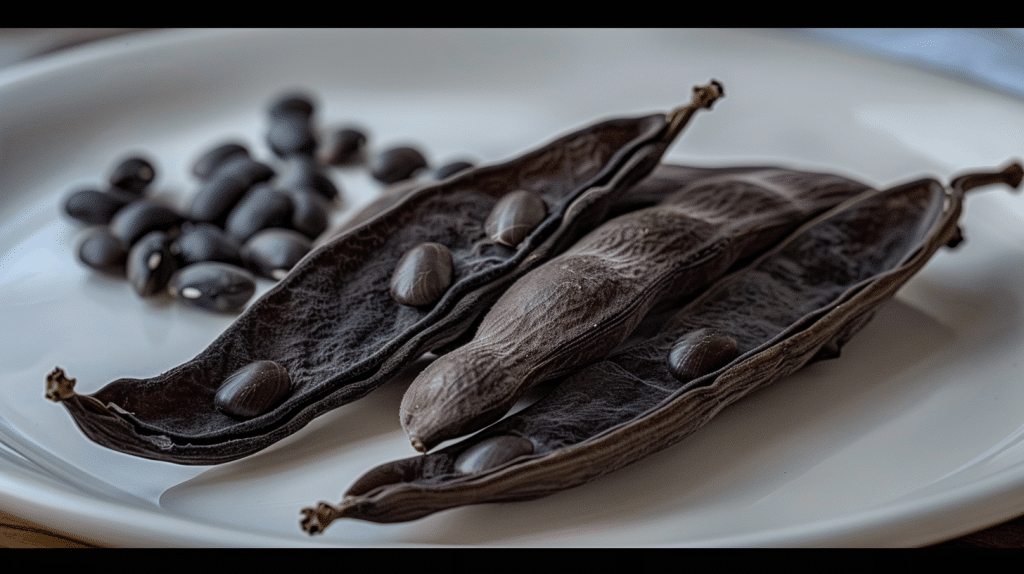
- Description and Origin: Velvet beans are tropical legumes from Africa and Asia. Their velvety pods contain protein-rich beans.
- Culinary Uses: The young, tender pods can be cooked as vegetables, while mature beans are used in soups and stews.
- Nutritional Value: Velvet beans are a good source of protein, fiber, and minerals like iron and potassium.
- Growing Conditions and Cultivation Tips: Velvet beans thrive in warm, humid climates and well-draining soil. They are often used as cover crops to improve soil fertility.
- Interesting Facts: Velvet bean extract is used in traditional medicine for various purposes, including as a natural L-dopa compound used to treat Parkinson’s disease.
| Nutrient | Amount |
|---|---|
| Calories | 341 |
| Protein (g) | 23.0 |
| Carbohydrates (g) | 62.0 |
| Dietary Fiber (g) | 10.0 |
| Total Fat (g) | 0.5 |
| Vitamin C (mg) | 0 |
| Vitamin A (IU) | 13 |
| Iron (mg) | 3.9 |
| Calcium (mg) | 85 |
| Magnesium (mg) | 171 |
| Potassium (mg) | 1110 |
| Unique Compounds | L-Dopa |
2. Verdolaga

- Description and Origin: Verdolaga, or purslane, is a leafy green vegetable native to the Mediterranean region and Asia.
- Culinary Uses: The leaves and stems are eaten fresh in salads or cooked in soups, stews, and stir-fries.
- Nutritional Value: Verdolaga is rich in omega-3 fatty acids, vitamin C, and antioxidants.
| Nutrient | Amount |
|---|---|
| Calories | 20 kcal |
| Protein | 2.0 g |
| Carbohydrates | 3.4 g |
| Dietary Fiber | 2.0 g |
| Total Fat | 0.4 g |
| Vitamin C | 21 mg |
| Vitamin A | 1320 IU |
| Iron | 1.9 mg |
| Calcium | 65 mg |
| Magnesium | 68 mg |
| Potassium | 494 mg |
| Unique Compounds | Omega-3 fatty acids |
- Growing Conditions and Cultivation Tips: Verdolaga is a hardy plant that grows well in sunny locations with well-draining soil.
- Interesting Facts: Verdolaga has been used in traditional medicine to treat various ailments, including inflammation and digestive issues.
3. Vidalia Onion

- Description and Origin: Vidalia onions are a sweet variety grown in a specific region of Georgia, USA.
- Culinary Uses: Their mild, sweet flavor makes them perfect for using raw in salads, salsas, and sandwiches or caramelized for a delicious topping.
- Nutritional Value: Vidalia onions are a good source of vitamin C, fiber, and antioxidants like quercetin.
| Nutrient | Amount |
|---|---|
| Calories | 40 kcal |
| Protein | 1.1 g |
| Carbohydrates | 9.3 g |
| Dietary Fiber | 1.7 g |
| Total Fat | 0.1 g |
| Vitamin C | 7.9 mg |
| Vitamin A | 0 IU |
| Iron | 0.2 mg |
| Calcium | 23 mg |
| Magnesium | 10 mg |
| Potassium | 146 mg |
| Unique Compounds | Quercetin |
- Growing Conditions and Cultivation Tips: Vidalia onions require a specific combination of soil and climate conditions found in the designated region of Georgia.
- Interesting Facts: Vidalia onions are so prized for their sweetness that they are protected by a Federal Marketing Order, which strictly defines the growing region and production standards.
4. Vietnamese Mint
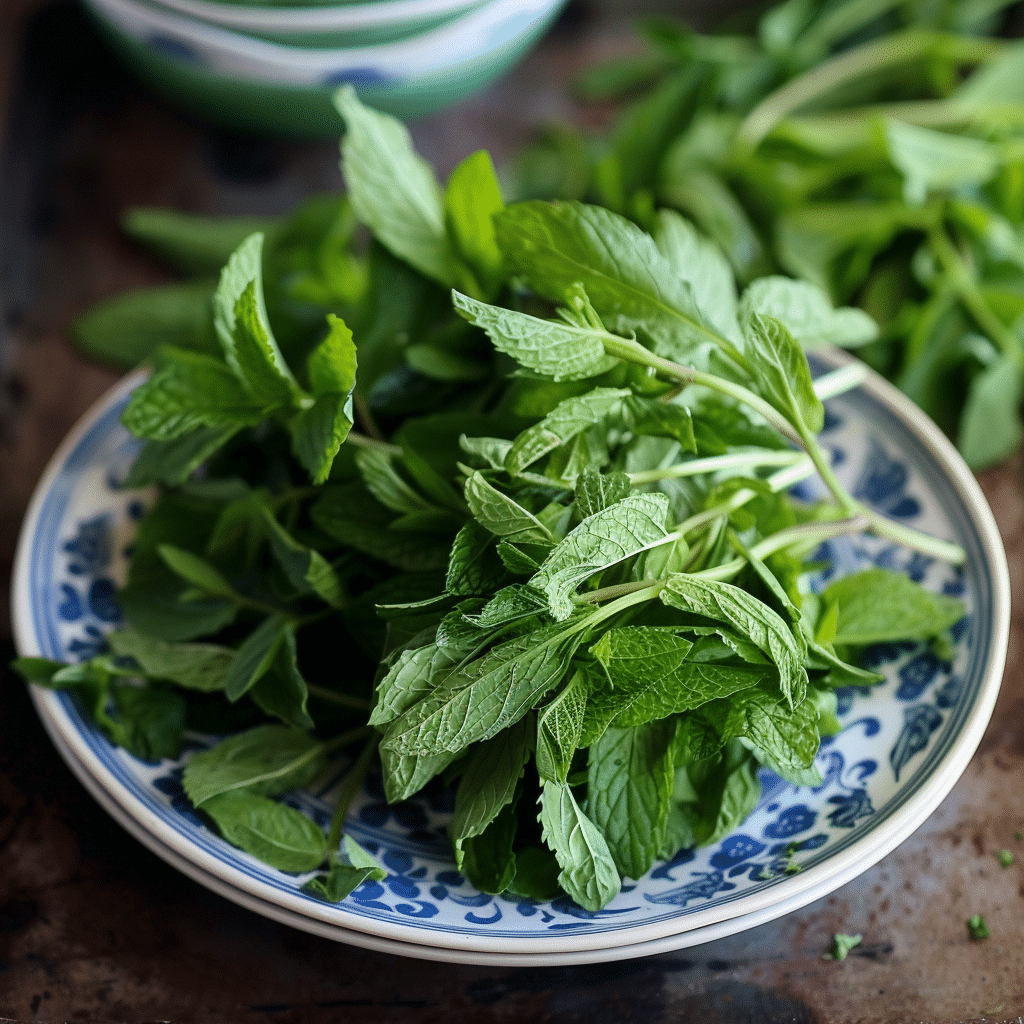
- Description and Origin: Vietnamese mint, also known as Vietnamese coriander, is an herb native to Southeast Asia.
- Culinary Uses: The leaves are used fresh in Vietnamese cuisine, adding a unique flavor to salads, soups, and summer rolls.
- Nutritional Value: Vietnamese mint is a good source of antioxidants and essential oils.
| Nutrient | Amount |
|---|---|
| Calories | 44 kcal |
| Protein | 4.0 g |
| Carbohydrates | 7.3 g |
| Dietary Fiber | 1.9 g |
| Total Fat | 0.9 g |
| Vitamin C | 15 mg |
| Vitamin A | 4600 IU |
| Iron | 2.3 mg |
| Calcium | 186 mg |
| Magnesium | 63 mg |
| Potassium | 458 mg |
| Unique Compounds | Essential oils |
- Growing Conditions and Cultivation Tips: Vietnamese mint thrives in moist, well-draining soil and partial shade. It can be grown from cuttings or seeds.
- Interesting Facts: In traditional Vietnamese medicine, Vietnamese mint is used to treat digestive issues and to refresh the breath.
5. Violet Cauliflower
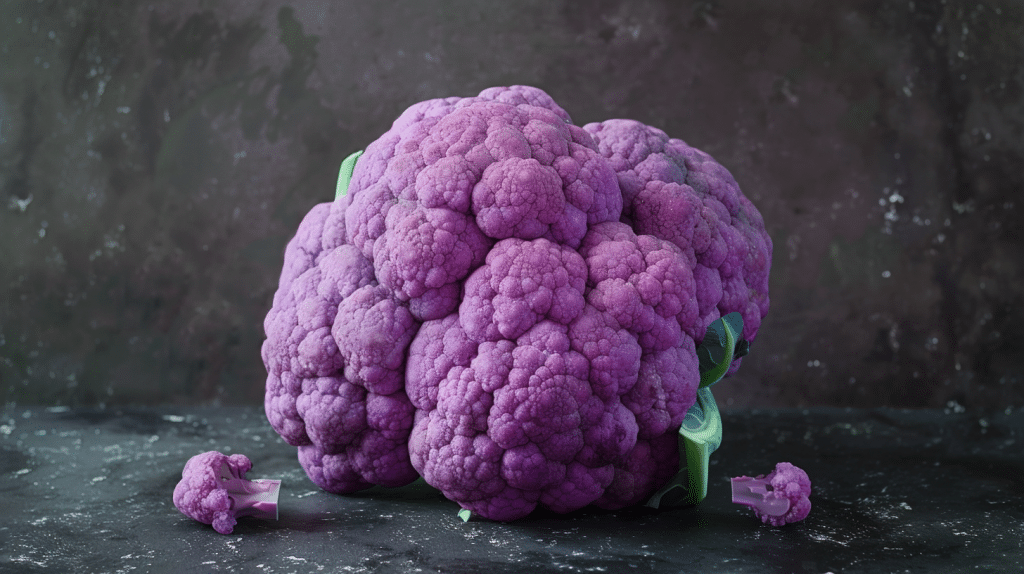
- Description and Origin: Violet cauliflower is a colorful variety of cauliflower featuring vibrant purple heads due to the presence of anthocyanin pigments.
- Culinary Uses: Violet cauliflower can be used in the same ways as white cauliflower – roasted, steamed, or raw in salads. Its color adds visual appeal to dishes.
- Nutritional Value: The purple pigments in violet cauliflower are powerful antioxidants, offering potential health benefits.
| Nutrient | Amount |
|---|---|
| Calories | 25 kcal |
| Protein | 1.9 g |
| Carbohydrates | 5.0 g |
| Dietary Fiber | 2.0 g |
| Total Fat | 0.1 g |
| Vitamin C | 48.2 mg |
| Vitamin A | 12 IU |
| Iron | 0.4 mg |
| Calcium | 22 mg |
| Magnesium | 15 mg |
| Potassium | 299 mg |
| Unique Compounds | Anthocyanins |
- Growing Conditions and Cultivation Tips: Violet cauliflower requires cool temperatures, consistent moisture, and well-draining soil to thrive.
- Interesting Facts: The purple color of violet cauliflower may fade to blue or gray when cooked, but adding an acidic ingredient like lemon juice can help preserve its vibrant hue.
6. Vigna
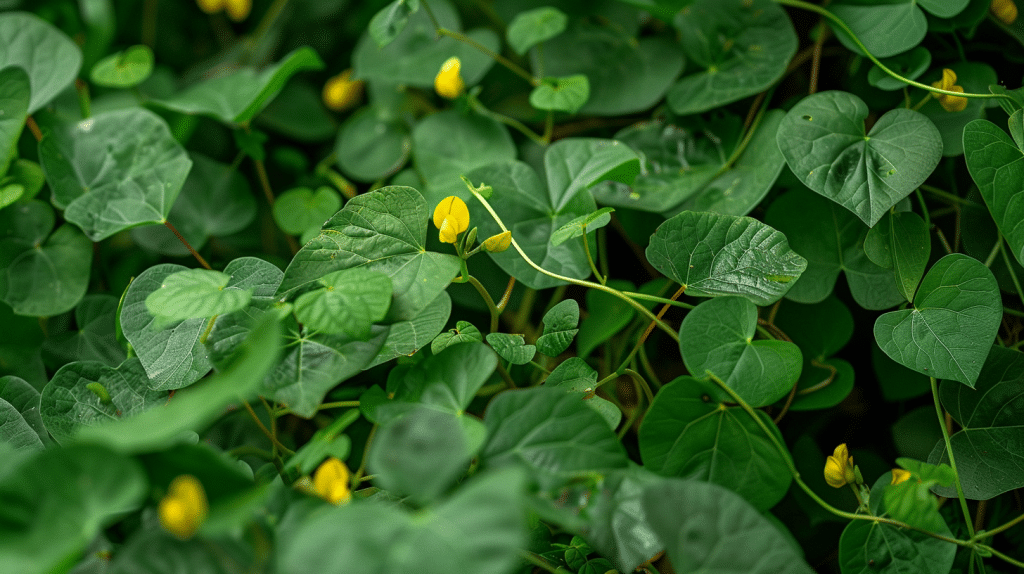
- Description and Origin: Vigna is a genus of legumes that includes several species, such as cowpeas and mung beans, originating from Africa and Asia.
- Culinary Uses: Vigna beans are used in various dishes worldwide, including soups, stews, curries, and salads.
- Nutritional Value: Vigna beans are rich in protein, fiber, and essential minerals like iron and potassium.
| Nutrient | Amount |
|---|---|
| Calories | 343 kcal |
| Protein | 23.5 g |
| Carbohydrates | 62.3 g |
| Dietary Fiber | 8.9 g |
| Total Fat | 1.3 g |
| Vitamin C | 1.5 mg |
| Vitamin A | 28 IU |
| Iron | 8.3 mg |
| Calcium | 50 mg |
| Magnesium | 184 mg |
| Potassium | 1112 mg |
| Unique Compounds | Isoflavones |
- Growing Conditions and Cultivation Tips: Vigna plants are well-adapted to warm climates and tolerate drought conditions. They are often used in crop rotation to improve soil fertility.
- Interesting Facts: Some Vigna species, like cowpeas, are known for fixing atmospheric nitrogen, making them valuable for soil improvement.
7. Vates Kale
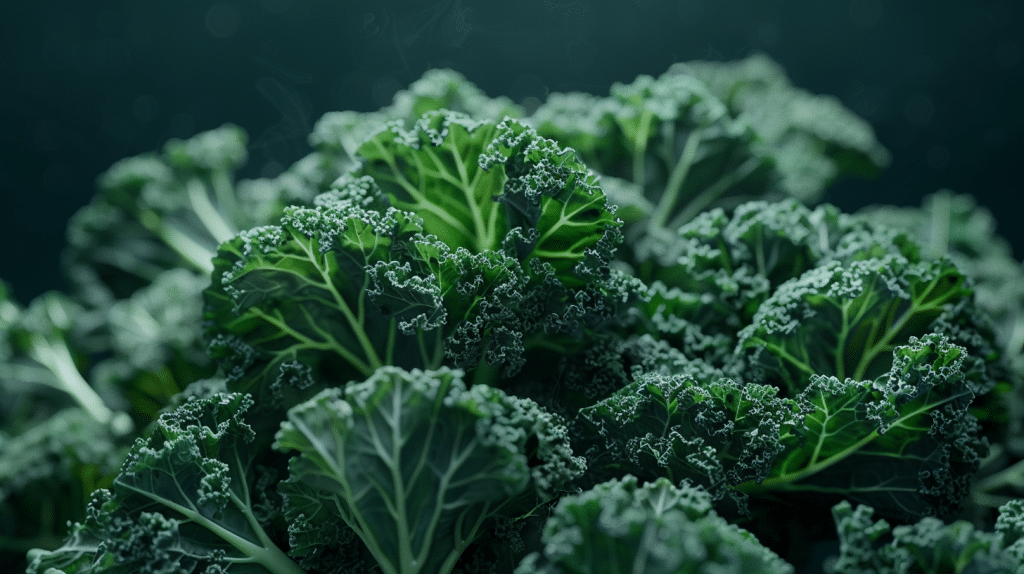
- Description and Origin: Vates kale is a popular leafy green vegetable cultivar, known for its blue-green leaves and cold tolerance.
- Culinary Uses: Vates kale can be used in salads, smoothies, soups, stir-fries or baked into chips for a healthy snack.
- Nutritional Value: Kale is a nutrient-dense vegetable, high in vitamins A, C, and K, antioxidants, and fiber.
| Nutrient | Amount |
|---|---|
| Calories | 49 kcal |
| Protein | 4.3 g |
| Carbohydrates | 8.8 g |
| Dietary Fiber | 3.6 g |
| Total Fat | 0.9 g |
| Vitamin C | 120 mg |
| Vitamin A | 9990 IU |
| Iron | 1.5 mg |
| Calcium | 150 mg |
| Magnesium | 47 mg |
| Potassium | 491 mg |
| Unique Compounds | Sulforaphane |
- Growing Conditions and Cultivation Tips: Vates kale thrives in cool weather and can tolerate frost. It prefers well-draining soil and full sun to partial shade.
- Interesting Facts: The ‘Vates’ in Vates kale comes from the term “Curly Vates,” which describes its distinct curly leaves.
8. Violet de Provence artichoke
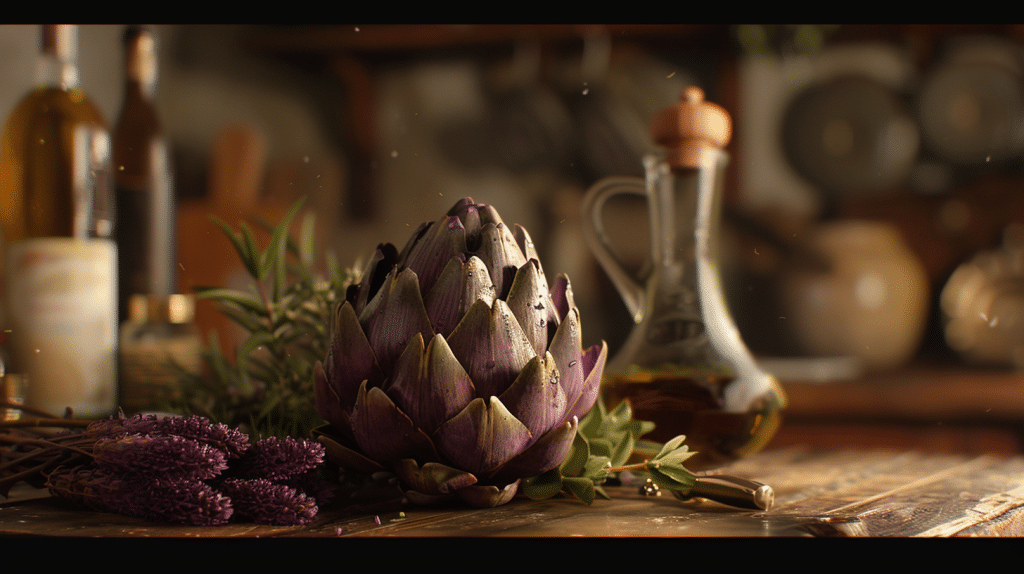
- Description and Origin: Violet de Provence artichokes are a stunning variety known for their deep purple hue. They originated in the south of France, specifically in the Provence region, where they are celebrated for their tender hearts and flavorful leaves.
- Culinary Uses: These artichokes can be enjoyed in a variety of ways. They are delicious steamed, grilled, or roasted, and their tender hearts make a luxurious addition to salads, pasta dishes, and antipasto platters. The leaves are also edible and can be enjoyed by dipping them in sauces or melted butter.
- Nutritional Value: Like other artichoke varieties, Violet de Provence artichokes are low in calories and rich in fiber, promoting healthy digestion. They also contain vitamins C and K, folate, and minerals such as magnesium and potassium.
| Nutrient | Amount |
|---|---|
| Calories | 47 kcal |
| Protein | 3.3 g |
| Carbohydrates | 10.5 g |
| Dietary Fiber | 5.4 g |
| Total Fat | 0.2 g |
| Vitamin C | 11.7 mg |
| Vitamin A | 16 IU |
| Iron | 1.3 mg |
| Calcium | 44 mg |
| Magnesium | 60 mg |
| Potassium | 370 mg |
|
Unique Compounds |
Cynarin, silymarin |
- Growing Conditions and Cultivation Tips: Violet de Provence artichokes thrive in warm, sunny conditions with well-draining soil. They can be grown from seed or seedlings and require regular watering and fertilization. Harvesting typically occurs from late spring to early summer.
- Interesting Facts: The striking purple color of Violet de Provence artichokes is due to the presence of anthocyanins, powerful antioxidants that may offer various health benefits. These artichokes are also celebrated in the “Fête de l’Artichaut” (Artichoke Festival) held annually in the Provence region of France.
9. Vlita
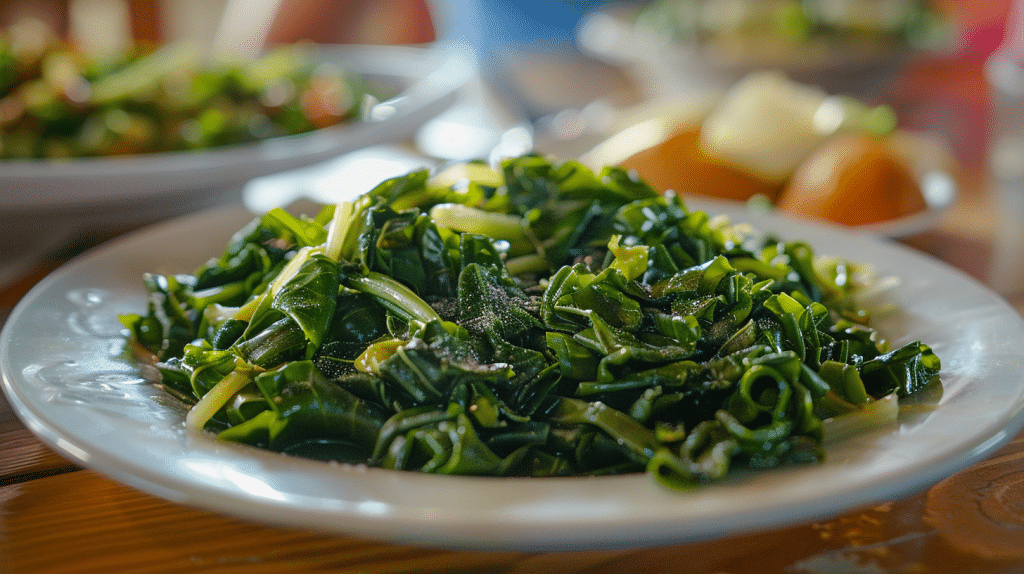
- Description and Origin: Vlita, also known as amaranth greens, is a leafy vegetable native to the Mediterranean region and Asia.
- Culinary Uses: Vlita leaves are often boiled or steamed and served as a side dish or added to soups, stews, and salads.
- Nutritional Value: Vlita is a good source of vitamins A and C and minerals like iron and calcium.
| Nutrient | Amount |
|---|---|
| Calories | 23 kcal |
| Protein | 2.5 g |
| Carbohydrates | 4.0 g |
| Dietary Fiber | 2.1 g |
| Total Fat | 0.3 g |
| Vitamin C | 70 mg |
| Vitamin A | 2912 IU |
| Iron | 2.3 mg |
| Calcium | 215 mg |
| Magnesium | 55 mg |
| Potassium | 508 mg |
| Unique Compounds | Antioxidants |
- Growing Conditions and Cultivation Tips: Vlita grows well in warm weather and prefers well-draining soil. It can be grown from seeds and harvested throughout the growing season.
- Interesting Facts: In Greek cuisine, vlita is a staple vegetable often served with lemon juice and olive oil.
10. Valencia Tomato
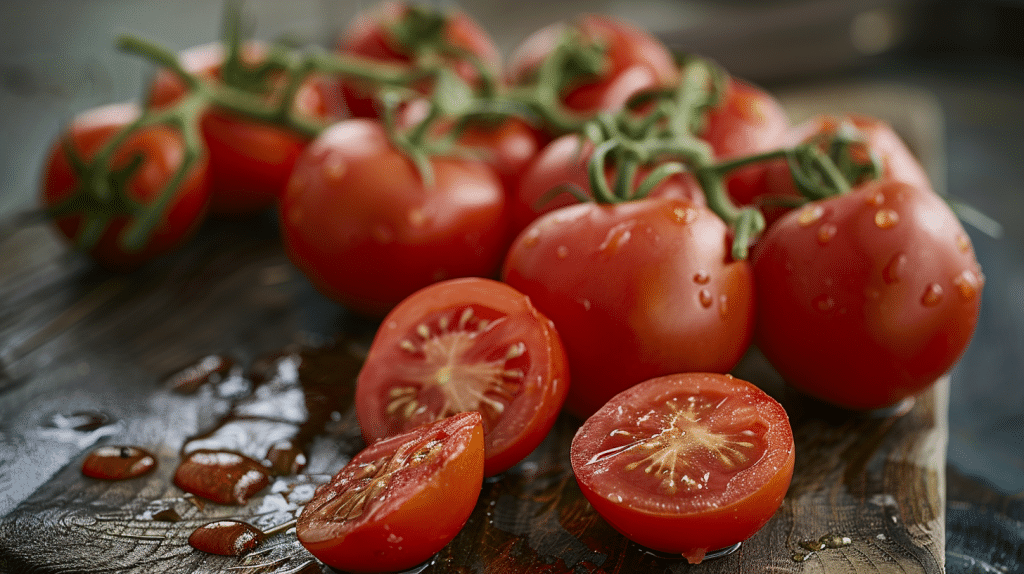
- Description and Origin: Valencia tomatoes are a variety of tomatoes known for their sweet flavor and juiciness, originally developed in Valencia, Spain.
- Culinary Uses: Valencia tomatoes are excellent for fresh eating, salads, and making sauces or soups.
- Nutritional Value: Tomatoes are a good source of vitamin C, potassium, and the antioxidant lycopene.
| Nutrient | Amount |
|---|---|
| Calories | 22 kcal |
| Protein | 1.0 g |
| Carbohydrates | 4.8 g |
| Dietary Fiber | 1.2 g |
| Total Fat | 0.2 g |
| Vitamin C | 14 mg |
| Vitamin A | 833 IU |
| Iron | 0.3 mg |
| Calcium | 10 mg |
| Magnesium | 11 mg |
| Potassium | 237 mg |
| Unique Compounds | Lycopene |
- Growing Conditions and Cultivation Tips: Valencia tomatoes require full sun and well-draining soil. They can be grown in gardens or containers and benefit from regular watering and fertilization.
- Interesting Facts: Valencia tomatoes are often used in the famous Spanish dish paella Valenciana.
11. Viking Potato

- Description and Origin: Viking potatoes are a variety of purple-skinned, yellow-fleshed potatoes developed in Norway.
- Culinary Uses: Viking potatoes can be boiled, mashed, roasted, or used in salads and soups.
- Nutritional Value: Potatoes are a good vitamin C, potassium, and fiber source. The purple skin of Viking potatoes also contains antioxidants.
| Nutrient | Amount |
|---|---|
| Calories | 77 kcal |
| Protein | 2.0 g |
| Carbohydrates | 17.0 g |
| Dietary Fiber | 2.2 g |
| Total Fat | 0.1 g |
| Vitamin C | 19.7 mg |
| Vitamin A | 0 IU |
| Iron | 0.8 mg |
| Calcium | 12 mg |
| Magnesium | 23 mg |
| Potassium | 421 mg |
| Unique Compounds | Antioxidants (carotenoids, flavonoids) |
- Growing Conditions and Cultivation Tips: Viking potatoes prefer cool climates and well-draining soil. They can be grown from seed potatoes and require regular watering and hilling.
- Interesting Facts: The Viking potato’s unique coloration results from selective breeding, combining the high vitamin C content of Peruvian potatoes with the hardiness of European varieties.
12. Voatsiperifery Pepper
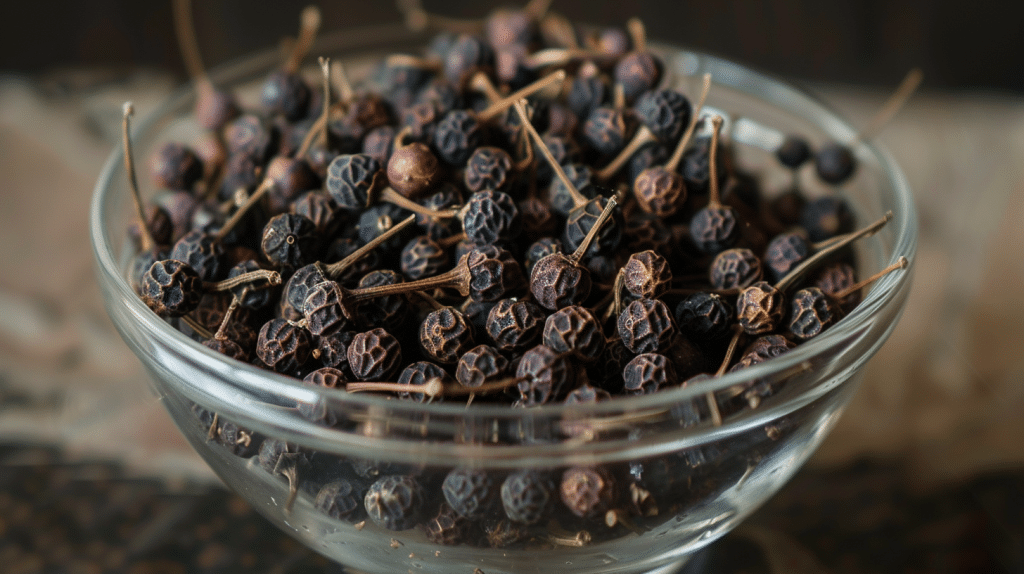
- Description and Origin: Voatsiperifery pepper is a rare, wild pepper variety native to the rainforests of Madagascar.
- Culinary Uses: Voatsiperifery pepper has a unique, smoky flavor and can be used to season various dishes, from meats to vegetables.
- Nutritional Value: Like other peppers, Voatsiperifery pepper contains capsaicin, which has potential health benefits, including boosting metabolism and reducing inflammation.
| Nutrient | Amount |
|---|---|
| Calories | 251 kcal |
| Protein | 10.4 g |
| Carbohydrates | 64.0 g |
| Dietary Fiber | 26.5 g |
| Total Fat | 3.3 g |
| Vitamin C | 21 mg |
| Vitamin A | 299 IU |
| Iron | 28.9 mg |
| Calcium | 437 mg |
| Magnesium | 178 mg |
| Potassium | 1259 mg |
| Unique Compounds | Piperine, essential oils |
- Growing Conditions and Cultivation Tips:Voatsiperifery pepper is difficult to cultivate and is primarily wild-harvested from the rainforests of Madagascar.
- Interesting Facts: Voatsiperifery pepper is known as the “pepper of the tree-climbers” because it is harvested by climbing the tall trees on which it grows.
13. Valencia Pepper

- Description and Origin: Valencia peppers are a variety of sweet peppers from Valencia, Spain. They are known for their bright colors and sweet flavor.
- Culinary Uses: Valencia peppers can be eaten raw in salads, roasted, stuffed, or used in various dishes for their sweet flavor and vibrant color.
- Nutritional Value: Valencia peppers are an excellent source of vitamin C and contain other beneficial compounds, such as carotenoids and antioxidants.
| Nutrient | Amount |
|---|---|
| Calories | 31 kcal |
| Protein | 1.0 g |
| Carbohydrates | 6.0 g |
| Dietary Fiber | 2.1 g |
| Total Fat | 0.3 g |
| Vitamin C | 127 mg |
| Vitamin A | 370 IU |
| Iron | 0.5 mg |
| Calcium | 10 mg |
| Magnesium | 11 mg |
| Potassium | 175 mg |
| Unique Compounds | Capsaicin, flavonoids |
- Growing Conditions and Cultivation Tips: Valencia peppers require warm temperatures, full sun, and well-draining soil. They can be grown in gardens or containers and benefit from regular watering and fertilization.
- Interesting Facts: Valencia peppers are often used in the famous Spanish dish, paella Valenciana, alongside Valencia tomatoes.
14. Veldt Grape

- Description and Origin: Veldt grapes are a wild grape native to South Africa, known for their small, tart fruits.
- Culinary Uses: Veldt grapes can be eaten fresh or used to make jams, jellies, and wines.
- Nutritional Value: Like other grapes, veldt grapes are a good source of antioxidants, vitamin C, and dietary fiber.
| Nutrient | Amount |
|---|---|
| Calories | 44 kcal |
| Protein | 0.8 g |
| Carbohydrates | 11.0 g |
| Dietary Fiber | 3.6 g |
| Total Fat | 0.1 g |
| Vitamin C | 1.2 mg |
| Vitamin A | 0 IU |
| Iron | 0.7 mg |
| Calcium | 17 mg |
| Magnesium | 13 mg |
| Potassium | 20 mg |
| Unique Compounds | Phytochemicals (phenols, tannins) |
- Growing Conditions and Cultivation Tips: Veldt grapes are well-adapted to the dry, semi-arid regions of South Africa. They can be grown from seeds or cuttings and require minimal maintenance.
- Interesting Facts: Veldt grapes have been used in traditional South African medicine to treat various ailments, including digestive issues and skin conditions.
15. Velvet Bean Leaves

- Description and Origin: Velvet bean leaves are edible, edible leaves of the velvet bean plant, which is native to Africa and Asia.
- Culinary Uses: The young leaves can be cooked and eaten as a leafy green vegetable, similar to spinach or collard greens.
- Nutritional Value: Velvet bean leaves are a good source of protein, fiber, and vitamins and minerals.
| Nutrient | Amount |
|---|---|
| Calories | 45 kcal |
| Protein | 4.0 g |
| Carbohydrates | 8.0 g |
| Dietary Fiber | 3.2 g |
| Total Fat | 0.6 g |
| Vitamin C | 23 mg |
| Vitamin A | 136 IU |
| Iron | 1.2 mg |
| Calcium | 40 mg |
| Magnesium | 25 mg |
| Potassium | 150 mg |
| Unique Compounds | L-Dopa |
- Growing Conditions and Cultivation Tips: Velvet bean plants are typically grown for their beans, but the leaves can be harvested as a secondary crop. They thrive in warm, humid climates and well-draining soil.
- Interesting Facts: In some cultures, velvet bean leaves are used in traditional medicine to treat various ailments, such as arthritis and inflammation.
Conclusion
Last but not least, the vibrant world of V-vegetables and things that start with v offers a treasure trove of flavors, nutrients, and culinary possibilities.
From the sweet crunch of Vidalia onions to the velvety texture of velvet beans, these veggies are true gems in the garden of healthy eating.
By incorporating a variety of V-vegetables into your meals, you can enjoy a rainbow of colors, flavors, and health benefits.
So why not take this opportunity to experience and experiment with these fantastic veggies? Challenge yourself to try a things that start with v each week, or even grow your own in a garden or container.

